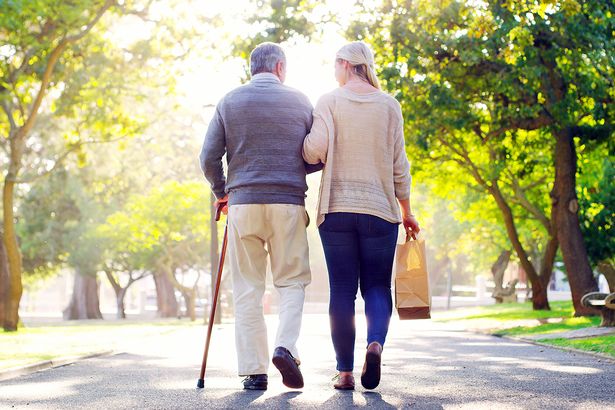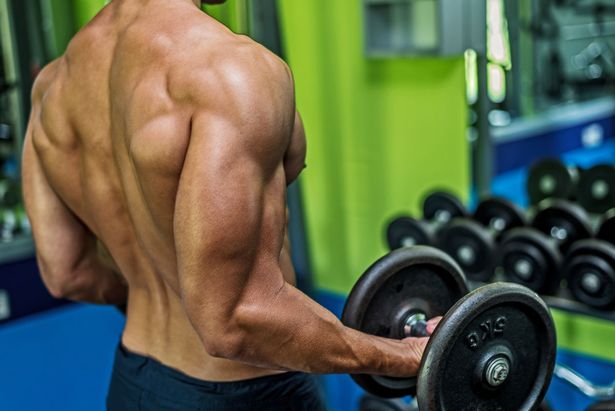Thanks to the pandemic, hospital waiting lists are at an all-time high.
According to the latest figures published in the journal The Lancet Rheumatology, almost 10 million people in the UK are waiting for surgery – up from 4.2million since before Covid hit.
One of the worst hit specialities is orthopaedics, which includes bone and joint treatments such as hip and knee replacements.
Nearly 100,000 patients have had their joint replacement surgery cancelled, and many are struggling to cope with increasing pain and mobility issues.
This means thousands of us are facing a long, painful wait ahead. So what should you be doing until your turn finally comes?
Keep moving
The most common reason for having a hip replacement is osteoarthritis – a degenerative joint disease that can make movement painful. But experts advise you to keep as active as possible before your op if you can.

Sign up to our newsletter to get the day’s biggest news straight to your inbox

The Mirror’s newsletter brings you the latest news, exciting showbiz and TV stories, sport updates and essential political information.
The newsletter is emailed out first thing every morning, at 12noon and every evening.
Never miss a moment by signing up to our newsletter here.
“The fitter you are prior to surgery, the less likely you are to have complications and the more likely to make a good recovery,” says chartered physiotherapist Katie Knapton (physiofastonline.co.uk). “So while waiting for your hip operation, it’s important to keep as mobile and strong as possible.”
Gentle low-impact exercise that doesn’t stress your hip joint is best.
“Short walks are really valuable – use aids like walking poles, sticks or crutches if required,” says Katie. “Start gently and gradually build as able. Increasing activity by a small amount can make a huge difference.”
Always talk to your doctor before starting new exercise and stop any activity that causes you increasing pain.
Pump your ankles
Having good circulation will help your operation wound heal quickly so try some ankle pumps, suggests Katie.
Sitting with legs straight out in front of you (on the bed is fine), move your ankle, pulling your toes up towards you as far as possible – you may feel a stretching sensation in the calf. Then point your toes back down. “Repeat 10 times a day – then up to 25 times a day as you feel stronger,” says Katie.
Build upper body strength
“You’ll be using crutches after surgery, so strengthening your arms will help with this,” says Katie. “Use some weights or even tinned food cans to do arm raises.”
Holding a weight in each hand, slowly raise your arms upwards in front of you to shoulder height, hold for a few seconds, then slowly lower them.

Repeat eight times. Then repeat the exercise, taking your arms out to the sides instead.
Seated chair press-ups are also good for the upper body. From sitting, place your hands on the arms of a chair and push up to lift your bottom off the seat. Slowly return to a sitting position and repeat 10 times, three times a day.
Squeeze your buttocks
The more you can build up strength in the muscles that surround and support your hip before your surgery, the faster and more effective your recovery will be. “Your glutes – or buttock muscles – will stabilise your new joint and will help you get back to walking and enjoying other activities quicker,” says Katie. So get them strong!
“If you are in a lot of pain and really can’t do much else, then just sitting and squeezing your buttocks together – and trying to activate them one at a time – is a good and useful exercise,” says physiotherapist Nell Mead (nellmead.com).
“If you are sitting, you should feel your whole body lifting up off the chair as you squeeze your buttocks together.”
Repeat several times.
“Bridges are also a good exercise to strengthen the hip and glute muscles with minimal pain,” adds Nell.
“Lie on your back, on the bed is fine if you can’t get down on to the floor, and bend your knees so that your feet are flat. Push down through your toes, squeeze your glutes, and lift your bottom an inch or so, then hold it for as long as you can.”

Swing your leg
Working on strength and flexibility before your operation is important, says Nell.
“Your new, artificial hip, will have the capacity to be more mobile than your arthritic natural hip. But unless your muscles are strong and flexible, you won’t get the most out of it. You’ll be just as restricted as you were before, just without the joint pain.
“Stand on your right foot. Activate your right glute, spread your toes, and bear down through your right big toe. This will give you the best ‘base’ to support yourself. If you need to hold on to the wall or the back of a chair for balance, do so as lightly as you can.
“Now swing your left leg forwards and back, or out to the side – this will help to increase flexibility in the left hip as you’ll be using momentum and will challenge your balance in the right leg.
“Take it gently at first and gradually warm up with more speed and range.”
Go hot or cold
Heat is a great muscle relaxer and can help lubricate the hip joint, relieve stiffness and warm it up before you try any activity. Use a heat pad or take a warm shower.
You could also try using a cold pack to reduce any inflammation after an activity if it feels comfortable to do so.
Watch your weight
If you are overweight, now might be the ideal time to try to lose a few pounds to take the strain off your joints, which breaks down the cartilage cushioning them.
Reduce your intake of sugar, saturated fats and refined carbohydrates, all of which cause weight gain and contribute to inflammation in the body, a factor in arthritis progression.

Eat antioxidants and omega-3s
Antioxidants, found in colourful fruit and veg, are thought to help cut down inflammation. Omega-3 fatty acids, found in salmon and sardines, also have anti-inflammatory properties linked to reduced joint pain. Aim for at least one portion a week.
The Mediterranean diet, rich in fruit and vegetables, wholegrains, beans, fish, olive oil and nuts, has been linked to reduced inflammation in people with osteoarthritis.
- Always seek medical advice before taking up a new exercise regime
